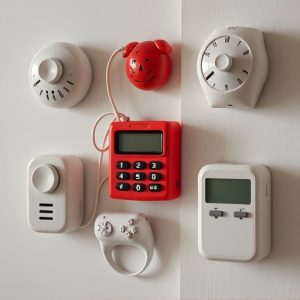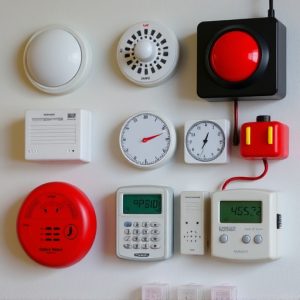Personal Safety Alarms for Joggers: Effective Systems & Regulatory Compliance
Lone jogging presents significant safety risks, prompting the need for Personal Safety Alarms for Jo…….
Lone jogging presents significant safety risks, prompting the need for Personal Safety Alarms for Joggers as vital deterrents and emergency communication tools. These devices, featuring high-decibel sirens, GPS tracking, and automatic fall detection, enhance response times and save lives. Effective use requires users to understand device functionalities, conduct regular maintenance, stay connected, and monitor notifications promptly. Regulatory bodies worldwide are mandating such safety features for remote area workers, and future innovations will further revolutionize lone worker safety with AI, IoT, and smart technology integrations.
In today’s fast-paced world, an increasing number of workers operate alone, whether it’s a jogger on a morning run or a maintenance worker in a remote location. This trend presents unique safety challenges that require effective solutions. Personal Safety Alarms for Joggers are crucial tools designed to mitigate risks and provide peace of mind. This article explores the understanding of lone work risks, different types of personal safety alarms, implementation strategies, regulatory compliance, and future trends shaping these essential devices.
- Understanding the Risks of Lone Work
- Types of Personal Safety Alarms for Joggers
- Implementing and Using Safety Alert Systems Effectively
- Regulatory Compliance and Future Trends
Understanding the Risks of Lone Work
Lone work, while offering independence and flexibility, also presents unique risks to workers’ safety. Joggers, often working alone in remote areas or during early morning/evening hours, are particularly vulnerable. Personal Safety Alarms for Joggers become essential tools in mitigating these risks. These devices not only provide a means of communication but also act as deterrents to potential dangers, enabling joggers to alert authorities or bystanders in case of emergencies.
Understanding the hazards associated with lone work is crucial. Incidents can range from personal attacks to accidental injuries, especially in isolated locations. Equipped with Personal Safety Alarms for Joggers, individuals can enhance their response capabilities and increase their chances of safety when faced with unforeseen circumstances.
Types of Personal Safety Alarms for Joggers
Personal Safety Alarms for Joggers have become increasingly important as more people take to running alone, especially in urban areas. These alarms are designed to be easily portable and robust, allowing joggers to quickly activate a loud noise that can deter potential threats or attract attention in case of an emergency. One common type is the personal alarm device, often worn as a clip-on or attached to a belt loop. These devices typically feature a button that, when pressed, triggers a high-decibel siren, making it difficult for attackers to approach.
Additionally, some modern Personal Safety Alarms for Joggers come equipped with GPS tracking capabilities, enabling joggers to share their location in real time with trusted contacts. This feature adds an extra layer of security, especially during early morning or evening runs. The alarms can be easily activated by pressing a button on the device or via a smartphone app, ensuring that help can be summoned quickly if needed.
Implementing and Using Safety Alert Systems Effectively
Implementing and using safety alert systems effectively is paramount for ensuring the well-being of lone workers, especially those engaging in outdoor activities like jogging. Personal Safety Alarms designed for joggers are increasingly sophisticated, offering features such as GPS tracking, automatic fall detection, and emergency communication buttons. To maximize their utility, individuals should familiarize themselves with these devices’ functionalities before heading out. Regular testing and maintenance are also crucial to ensure the systems operate flawlessly when needed.
When utilizing Personal Safety Alarms for joggers, it’s essential to stay connected and monitor notifications promptly. Setting up a network of trusted contacts who can receive alerts in case of an emergency is vital. Additionally, understanding the device’s range and signal strength helps joggers make informed decisions while outdoors, ensuring they remain within safe communication boundaries. Regular updates on the alarm system’s battery life and charging status are equally important to prevent any unexpected failures during a run.
Regulatory Compliance and Future Trends
With an increasing number of lone workers, including joggers and outdoor enthusiasts, the need for effective personal safety alarm systems has gained significant traction. Many countries have implemented regulations to ensure the well-being of such individuals, mandating the use of specific safety devices while working or exercising in remote areas. These regulatory requirements often include guidelines on the features and functionality of personal safety alarms, emphasizing elements like loud sound output, automatic fall detection, and GPS tracking for rapid response in case of emergencies.
Looking ahead, future trends in lone worker safety systems suggest a move towards more sophisticated technology integration. Advancements in artificial intelligence and machine learning could enhance the accuracy of fall detection algorithms, while IoT connectivity might enable real-time data sharing between workers and emergency services. Additionally, the development of Personal Safety Alarms for Joggers (and other outdoor workers) may incorporate smart features like automatic incident notification, environmental risk assessment, and integration with wearable fitness trackers, further improving safety measures.
Lone workers, particularly joggers, face unique risks that require effective safety alert systems. By understanding these hazards and implementing personal safety alarms tailored to their needs, individuals can significantly enhance their security while running alone. Regulatory compliance ensures these devices meet necessary standards, while future trends point towards more advanced, user-friendly technologies. Investing in a reliable personal safety alarm for joggers is a proactive step towards navigating the outdoors with increased peace of mind and enhanced safety measures.


